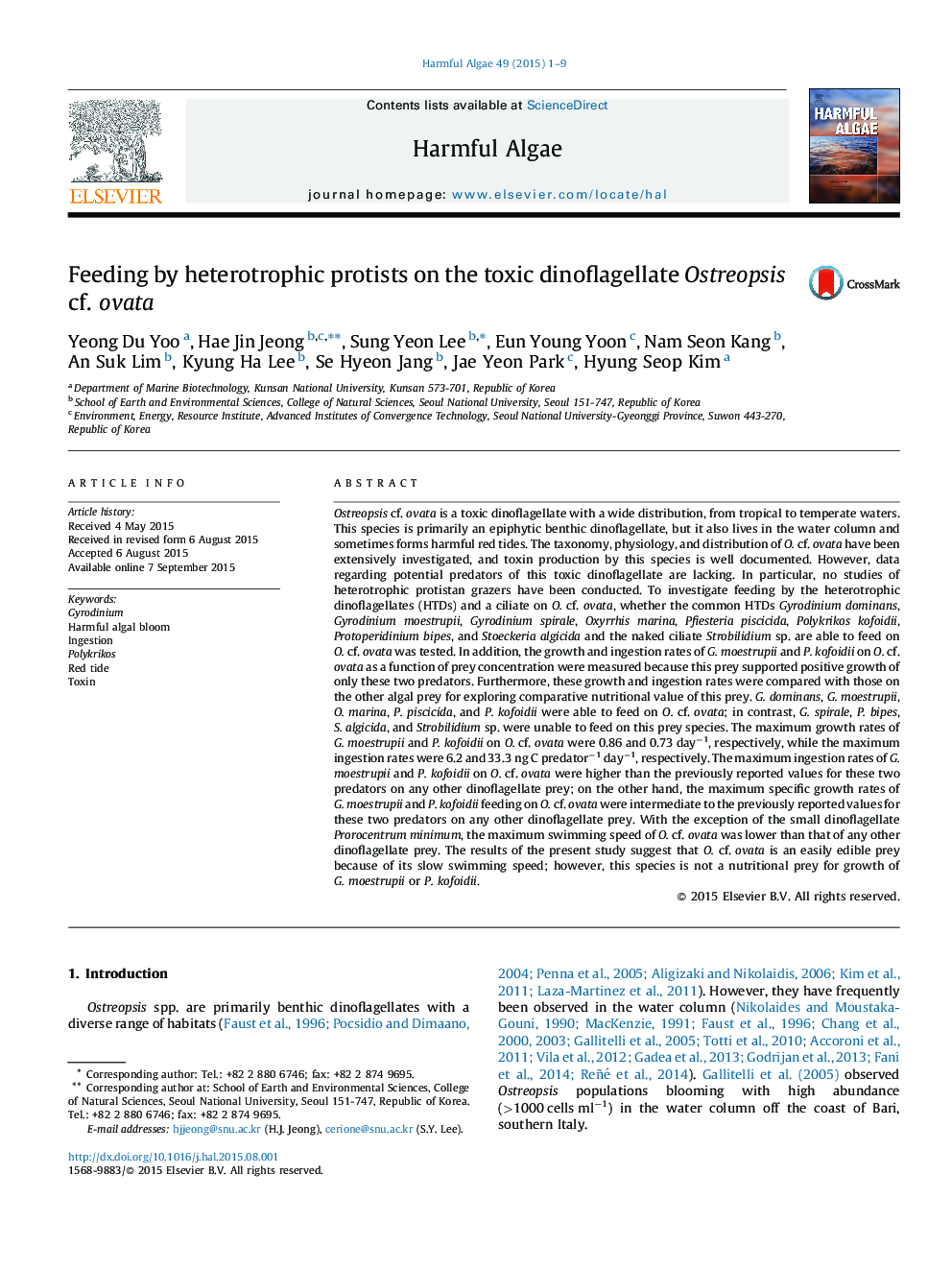| کد مقاله | کد نشریه | سال انتشار | مقاله انگلیسی | نسخه تمام متن |
|---|---|---|---|---|
| 4545213 | 1626922 | 2015 | 9 صفحه PDF | دانلود رایگان |

Ostreopsis cf. ovata is a toxic dinoflagellate with a wide distribution, from tropical to temperate waters. This species is primarily an epiphytic benthic dinoflagellate, but it also lives in the water column and sometimes forms harmful red tides. The taxonomy, physiology, and distribution of O. cf. ovata have been extensively investigated, and toxin production by this species is well documented. However, data regarding potential predators of this toxic dinoflagellate are lacking. In particular, no studies of heterotrophic protistan grazers have been conducted. To investigate feeding by the heterotrophic dinoflagellates (HTDs) and a ciliate on O. cf. ovata, whether the common HTDs Gyrodinium dominans, Gyrodinium moestrupii, Gyrodinium spirale, Oxyrrhis marina, Pfiesteria piscicida, Polykrikos kofoidii, Protoperidinium bipes, and Stoeckeria algicida and the naked ciliate Strobilidium sp. are able to feed on O. cf. ovata was tested. In addition, the growth and ingestion rates of G. moestrupii and P. kofoidii on O. cf. ovata as a function of prey concentration were measured because this prey supported positive growth of only these two predators. Furthermore, these growth and ingestion rates were compared with those on the other algal prey for exploring comparative nutritional value of this prey. G. dominans, G. moestrupii, O. marina, P. piscicida, and P. kofoidii were able to feed on O. cf. ovata; in contrast, G. spirale, P. bipes, S. algicida, and Strobilidium sp. were unable to feed on this prey species. The maximum growth rates of G. moestrupii and P. kofoidii on O. cf. ovata were 0.86 and 0.73 day−1, respectively, while the maximum ingestion rates were 6.2 and 33.3 ng C predator−1 day−1, respectively. The maximum ingestion rates of G. moestrupii and P. kofoidii on O. cf. ovata were higher than the previously reported values for these two predators on any other dinoflagellate prey; on the other hand, the maximum specific growth rates of G. moestrupii and P. kofoidii feeding on O. cf. ovata were intermediate to the previously reported values for these two predators on any other dinoflagellate prey. With the exception of the small dinoflagellate Prorocentrum minimum, the maximum swimming speed of O. cf. ovata was lower than that of any other dinoflagellate prey. The results of the present study suggest that O. cf. ovata is an easily edible prey because of its slow swimming speed; however, this species is not a nutritional prey for growth of G. moestrupii or P. kofoidii.
Journal: Harmful Algae - Volume 49, November 2015, Pages 1–9